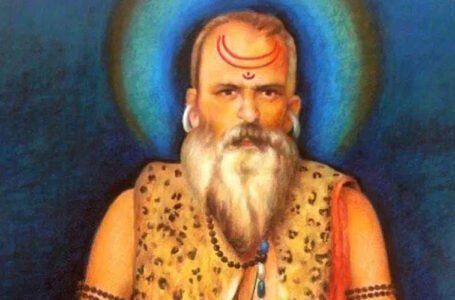Father, Son and Donkey

The Cost of Pleasing Everyone: A Timeless Tale of Wisdom and Folly
-Trushti Dand
Have you ever changed your decision just because someone else disapproved—only to regret it later? The story of Father, Son, and Donkey is a seemingly simple folktale that reveals profound truths about human behaviour, decision-making, societal pressures, and the consequences of blind conformity. This timeless tale, told in countless cultures with minor variations, invites us to reflect on the importance of inner conviction and the perils of trying to satisfy everyone. It narrates the journey of a father and his son heading to the market with their donkey, encountering various people along the way who offer unsolicited judgments on how they should travel. Each time, the father and son adjust their behaviour according to what others say, only to end in complete failure when, attempting to please everyone, they carry the donkey and eventually lose it to the river.
Set in an unnamed village and market, the story unfolds along a simple road and over a bridge, creating a minimalist backdrop that lets the moral shine through. Its cultural importance lies in its universal relatability and oral tradition—variations of this tale can be found in Indian panchatantra stories, Middle Eastern folktales, African proverbs, and even Aesop’s fables in Western traditions. This ubiquity speaks to a shared human experience across civilizations: the struggle between individuality and societal expectations. Especially in traditional societies, where familial duty and public opinion often shape personal decisions, this story would have served as a gentle yet poignant lesson passed down through generations.
At its core, the story explores several enduring themes: the folly of people-pleasing, the danger of indecisiveness, the pressure of public opinion, and the loss of individual agency. The father and son represent two generations who are navigating the path of life together—perhaps symbolizing the way wisdom must be passed down, not just through compliance, but through discernment. The donkey, a humble but essential animal, stands as a symbol of resources, responsibility, and the natural balance between use and misuse. When ridden by one, the donkey is used wisely. When burdened by two, it strains. When carried, the roles are absurdly reversed. Through this shift, the donkey becomes a symbol of how common sense is lost when people abandon reason in pursuit of validation.
The tale also employs satire and irony as key literary devices. The humour arises from the increasingly absurd actions the father and son take to avoid criticism. The climax—carrying the donkey and ultimately losing it—serves as a dramatic, ironic twist. In trying to preserve the donkey and please everyone, they end up with nothing. The story also uses repetition effectively: a structure of encountering different people, reacting to criticism, and adjusting behaviour, only to be mocked again. This repetitive pattern creates a rhythm that builds suspense and reinforces the theme, much like a fable or cautionary tale designed for oral storytelling. There’s also personification of sorts—the donkey is voiceless yet central to the moral arc, reacting through physical strain rather than words. This silent presence forces the readers or listeners to interpret its suffering, inviting empathy and deeper reflection.
The modern relevance of this story cannot be overstated. In an age dominated by social media, where everyone’s actions are subject to public scrutiny, the pressure to please others has only intensified. Individuals often make life choices—ranging from career paths to personal beliefs—based not on inner values but on what will garner approval from friends, followers, or society. The story reminds us that attempting to cater to every voice can not only paralyze our decision-making but also lead to the loss of what matters most—our purpose, resources, peace of mind, and identity. In management, education, parenting, and even activism, the lesson applies universally: not all advice is wise, and trying to apply every opinion can have self-defeating results.
Psychologically, the story illustrates the concept of external locus of control, where one’s actions are excessively guided by the opinions of others, in contrast to an internal locus, where decisions stem from personal belief and reasoning. The father and son, despite representing two generations, do not seem to learn from their previous mistakes throughout the journey, reflecting how peer pressure can cloud critical thinking even in adults. The story also hints at the idea of social performativity—changing behaviour in response to an audience—which is common in both rural and urban societies. What begins as a simple journey turns into a theatre of reactions, each dictated by new observers.
Another interesting layer is the dynamic between father and son. The father is depicted as someone who is easily swayed, despite his seniority, and the son, though obedient, lacks the confidence to question or reason independently. This mirrors real-life familial situations where elders may feel the pressure of “doing the right thing” according to societal standards, and youth struggle with identity in the face of external expectations. The story subtly critiques both blind obedience and passive authority. It implies that wisdom is not merely about age but about the ability to reflect and hold steady amidst criticism.
Symbolism also runs deep in this narrative. The bridge, which appears toward the end, represents a transition—a threshold between belief and consequence. The donkey’s fall from the bridge signals a turning point where the cumulative folly reaches its peak. Water, in this context, acts as both destroyer and cleanser. By drowning the donkey, it metaphorically washes away the illusion that pleasing others ensures safety or success. The donkey’s tied legs echo the self-imposed constraints humans place on themselves when they suppress logic in favour of approval.
In terms of literary structure, the story follows the classic narrative arc: exposition (setting out to the bazaar), rising action (repeated changes in behaviour), climax (carrying the donkey), and denouement (the donkey drowns). This neat structure makes it easy to remember and retell, a hallmark of folk literature. The language is plain and accessible, yet the sequence of events grows more exaggerated, amplifying the moral without sounding preachy.
What makes this folktale persist through centuries is its gentle humour, clear logic, and deep resonance with everyday dilemmas. It holds a mirror to our behaviour and encourages introspection: How often do we second-guess ourselves due to others’ opinions? How many times do we start with a clear purpose, only to lose track in the noise of external judgment? Whether it’s a student choosing a career, a parent deciding how to raise their child, or a leader facing public expectations, the story remains universally applicable. In today’s world of “likes,” “shares,” and constant comparison, Father, Son, and Donkey is more relevant than ever—an enduring reminder that no matter what you do, someone will always have something to say. Therefore, instead of trying to satisfy every voice, it is wiser to listen to your own, be firm in your purpose, and proceed with thoughtful confidence.
In conclusion, Father, Son, and Donkey is not just a tale of a journey to the market—it is a journey into the very human struggle between self and society. Rich in symbolism, irony, and moral depth, it urges readers to balance empathy with judgment, humility with conviction, and most of all, to remember that one cannot—and should not—try to please everyone. It is a tale worth telling and retelling, not only for its moral but for its insight into the delicate dance between individual choice and collective voice.


